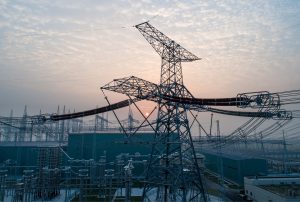Reports of China’s development of new large language models (LLMs) shocked the U.S. technology sector, raising questions over how the U.S. can avoid ceding ground to a strategic competitor in the critical field of artificial intelligence (AI). While much attention has been given to how many and what type of semiconductors DeepSeek and other AI companies have had access to, less attention has been paid to other elements in the AI supply chain that have provided China with an advantage over U.S. AI firms. One major advantage is China’s low electricity prices. Higher AI energy intensity and overall energy costs in the United States have narrowed the U.S. edge over China, which boasts lower costs of electricity and a less energy intensive AI sector.
Amid the AI boom, electricity requirements are projected to surge. According to the International Energy Agency (IEA), global data centers used 1.65 billion gigajoules of electricity in 2022, and this expected to increase anywhere from 35 percent to 128 percent by 2026. Training a large language model uses the energy equivalent of powering 130 U.S. homes for a year. After an LLM is trained, consumers use the model to create inferences, which uses more energy. While creating a written sample does not require a large amount of energy, generating one AI image uses almost as much energy as charging a smartphone.
By contrast, China’s DeepSeek has proven that it can use far less computing power than the global average. Its LLM uses 10 to 40 times less energy than U.S. AI technology, which demonstrates significantly greater efficiency. Analysts have stated that, if DeepSeek’s claims are true, some AI queries may not require a data center at all and can even be pushed out to phones.
It doesn’t end there. This would also have knock-on effects for data center cooling requirements. Data centers have required large amounts of additional energy for cooling hardware that may otherwise become overheated under large computing tasks. Using lower levels of computing power, as in China, means cooling requirements will decline.
Providing an even greater advantage for China over the United States is the fact that electricity costs in the U.S. are more than double those in China. Household electricity prices in the U.S. were $0.18 per kilowatt-hour in March 2024, while those in China were $0.08 per kilowatt hour for the same month. One reason for this is that Chinese electricity prices are regulated to maintain affordability, and both fossil fuel and renewable energy suppliers receive government subsidies. The United States provides subsidies to fossil fuel suppliers at one-third the level of China and to green energy suppliers at less than one-third the level of China.
China also has an advantage in terms of electricity grid development. While both countries are working to implement a smart grid, which includes sensors and storage to optimize energy use, China is ahead in the installation of smart meters, with over 90 percent penetration as compared to 72 percent in the United States. U.S. infrastructure is aging, while China has an advanced transmission network.
However, there are bright spots in AI electricity usage and transmission in the United States that will increase U.S. energy competitiveness. First, the Biden administration’s Infrastructure Investment and Jobs Act of 2021 included the Grid Resilience and Innovation Partnerships (GRIP) Program to increase public and private energy to the grid. Transmission projects are already underway.
Second, the United States can gain from imitating aspects of China’s more energy efficient AI model. U.S. AI companies are already studying Deepseek’s approach to reduce the need for energy consumption.
Third, U.S. firms have greater access to funds and are investing in alternative energy sources that would reduce pressure on existing electricity resources. For example, both Amazon and Google previously announced that they are investing in small nuclear reactors to shore up power supplies.
The bottom line is that the gulf between the United States and China’s AI energy landscape is perhaps deeper than had been believed, but it can be greatly narrowed by efficiency gains in U.S. AI models and ongoing U.S. investment in energy resources and infrastructure. Although China holds a lead in AI energy efficiency and costs, the United States has greater access to funds and higher levels of technological innovation, which will allow AI firms to easily reach the level of energy efficiency attained by China. As long as U.S. policymakers and leading tech companies work together to drive AI efficiency, the U.S. can remain an AI leader without facing significant energy constraints.

































